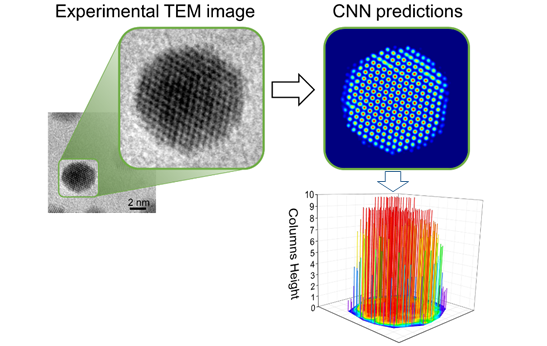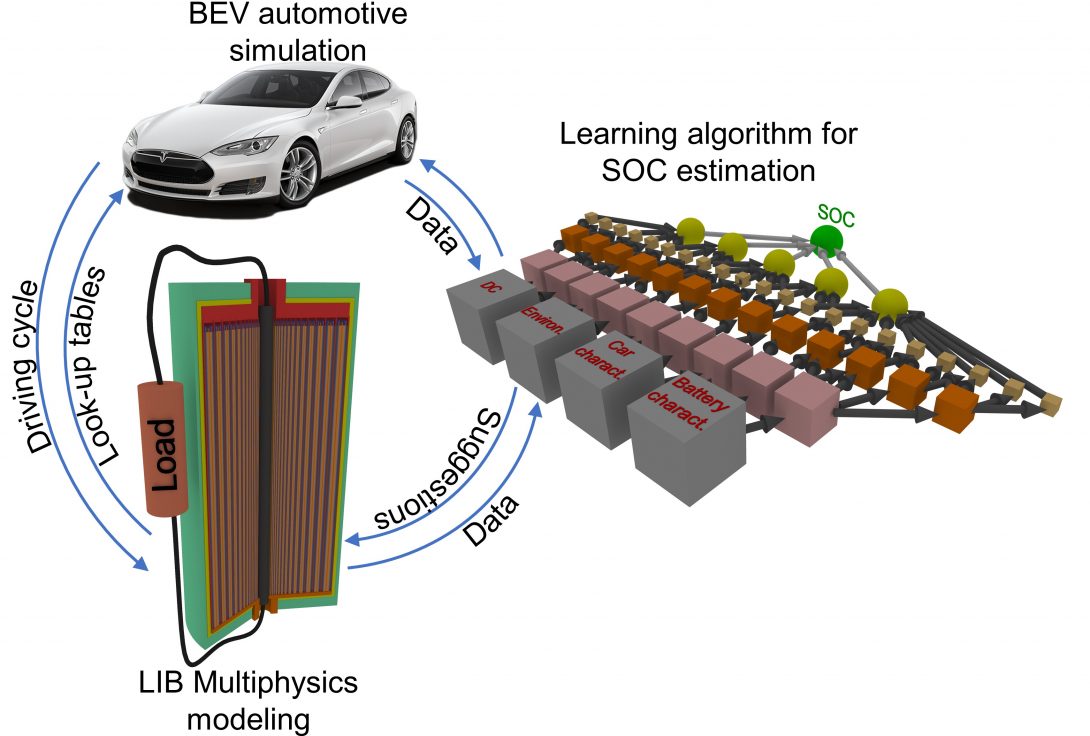Transmission electron microscopy (TEM) provides the highest spatial resolution to an image of the nanoparticle’s atomic structure, it is time consuming and cumbersome to estimate the atomic column heights from the two-dimensional projected TEM images. With continued progress of in-situ or operando TEM techniques in discovery of nanoscale science, it is paramount to develop artificial intelligence approaches that can be integrated with real-time TEM imaging. In this work, we present a modeling framework based upon deep learning approach (i.e., convolutional neural network-CNN) for the detection of the atomic column heights in the experimental high-resolution transmission electron microscopy (HRTEM) images.

We use machine learning techniques (e.g., recurrent neural network) to study battery performance in application to electric vehicles (EV). In particular, the train our model to predict the state-of-charge (SOC) as used in the battery management systems (BMSs). Matlab/Simulink coupled to Comsol multi-physics software is used to generate the training data set. Consequently different driving cycles are utilized to test the model and predict SOC in complex conditions.
State-of-charge (SOC) estimation in a lithium-ion battery (LIB) is a crucial task of the battery management system (BMS) in battery electric vehicle (BEV) applications. In this work, we propose a modeling framework for SOC estimation using different machine learning (ML) methods, i.e. support vector regressor (SVR), artificial neural network (ANN), and long-short term memory (LSTM) network. The necessary training data have been developed using Matlab/Simulink automotive simulations of BEV, integrated with an electrochemical Comsol Multiphysics model of LIBs. The developed multi-physics model of BEV and LIBs operation allows to investigate the effect of driving conditions on the electrochemical and degradation (i.e., the solid electrolyte interphase – SEI – formation and decomposition) processes occurring inside batteries of different chemistries adopted in the Tesla S and Nissan Leaf BEVs. Our study remarks also the importance of taking into account the different components of BEV in the development of informative datasets, which are required for the implementation of learning algorithms for SOC evaluation. Thus, the proposed work establishes a basis for the generation of realistic training data based on simulations of BEV and LIBs dynamic response, which allows a more precise SOC estimation based on data driven approaches.

